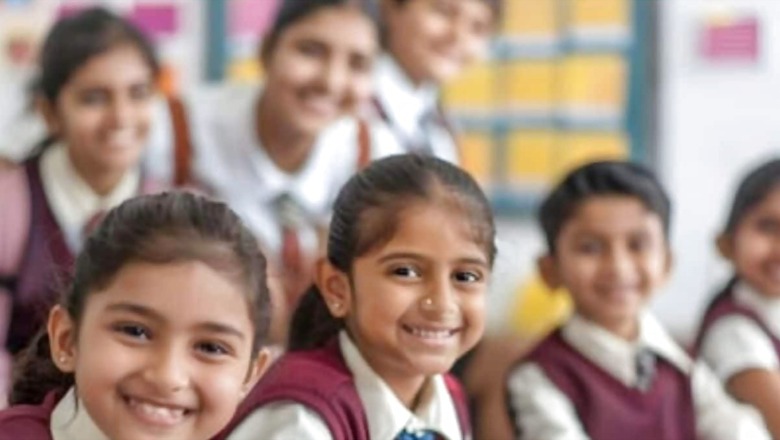
views
Pause. Breathe. Feel. An 8-year-old, grade 3 student, kept repeating these words to her classmate, after an apparent meltdown over a shared activity. I watched in awe as the classmate closed his eyes, his breathing getting deeper and slower and the strain on his face slowly melting away, giving way to a calm disposition. Almost immediately after, the duo went on to pair, in perfect harmony, for the said activity.
This was a great example of self-regulation and self-awareness, one of the many positive impacts that integrating mindfulness in the education curriculum achieves. Imagine these children growing up, facing complex challenges in their workplaces, as well as personal lives, and already having developed the mindfulness tools to problem-solve, self-control and react better to stressful situations.
If we are to say it simply, mindfulness means to be present in moment, be aware of your mind and body and regulate your emotions. It creates a safe space for children to breathe, to connect and focus on their mind and body, fostering a deeper understanding of self and also of their relationship with others.
But why are we increasingly hearing about mindfulness today? It is because it has never been more relevant than it is today! Think about it; today’s kids are faced with academic pressure much earlier than before. The heightened exposure, competition and stress is changing their behaviour and how they feel. A staggering 46% per cent of Indian school students reported being anxious about their studies.1 UNICEF’s State of the World’s Children report 2021 stated that one out of 7 15-24 year-olds in India feels depressed. Significantly, a survey conducted by the Indian Council of Medical Research (ICMR) revealed that 12-13% of students in India are grappling with psychological, emotional, and behavioural conditions. Practising mindfulness can help students decrease negative emotions and manage and respond to stress in healthier ways.
Mindfulness training also reduces behavioural problems, helps control aggression and improves their ability to pay attention. 2 Going beyond the emotional, it has implications on the physical well-being of students as well. Mindfulness has proven to have positive effects on our brains and immune functions, which helps students improve their sleep quality and fight illnesses. 3 It also leads to favourable physiological changes as it triggers the areas in the brain responsible for not just empathy and emotional regulation but also, learning and memory. Mindfulness,, therefore, plays a significant impact on students’ academic performances.
It is also a great tool to help students transition – to new classrooms, new friends, new activities, new subjects – It helps them to focus on what they are really thinking about, get a grip on their feelings and shift priorities. It really is amazing to see the number of ‘wow’ moments we have had when we see the impact of mindfulness sessions on how students behave and interact.
Schools can integrate Mindfulness through various interventions based on the grade and specific needs. Some of these could be:
Meditation and Breathing sessions: Brief sessions on mindful breathing and simple meditation can be easily executed in classrooms.
Mindful Listening and Activities: Group activity with intended listening without judgment can be a part of mindfulness training. A jigsaw puzzle at the end of a busy study day can help students relax and calm down.
Mindful Movement: Stretching and Yoga for students to feel closer to their bodies and understand themselves better.
One with Nature: nature walks are a great way for students to feel calm and understand their emotions while they are one with nature.
Gratitude and Goal setting: Helping students take a pause and be thankful is important; setting small goals and writing them can help them streamline their emotions.
What also needs to be kept in mind is that mindfulness as an approach needs to trickle down from the teachers to the students. Mindful training for teachers is as important to help them in nurturing a culture that encourages self-reflection. Mindfulness-based pedagogies must be at the core of teaching and learning processes.
Embracing mindfulness as an integration to social and emotional learning (SEL) can drastically transform the entire environment of the school, creating a culture of experiential and transformative learning, nurturing students who grow up to be compassionate, creative, empathetic individuals with a higher value of self and unwavering confidence to face any situation.
(Written by Devyani Jaipuria, Pro Vice Chairperson of Delhi Public School, Sector-45, Gurugram, Delhi Public School, Jaipur, Dharav High School, Jaipur, and DPS International, Gurugram.)


















Comments
0 comment